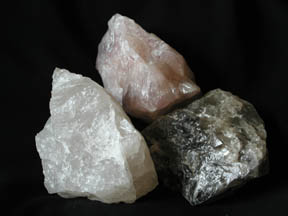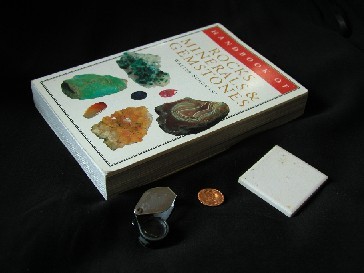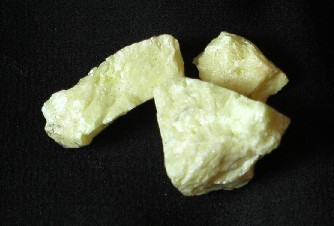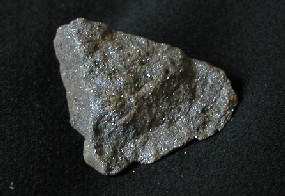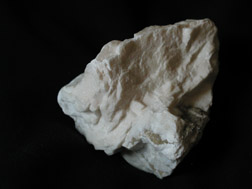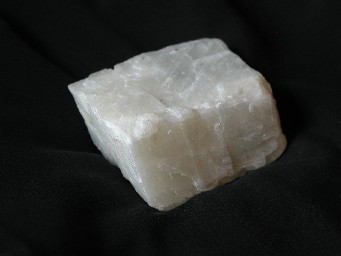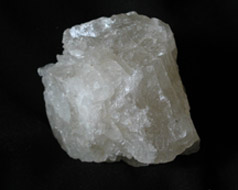Click on image for full size
Windows to the Universe
Related links:
Whatís That Mineral?
Spotting minerals is fun! There are many different types of minerals, each with a different name and a special set of characteristics. So, if you find a mineral that you do not recognize, you can use the characteristics described below with an mineral identification book to help you figure out what its name is!
Shape
Different types of minerals have different shapes because of the special arrangement of atoms within them. Many minerals have crystal shapes. There are six different groups of crystal shapes. Some minerals do not look like crystals, either because the crystals are too small to see without a microscope or because they have been broken. When a mineral forms, the crystals start out very small but, if there is room, they can grow to be very large. Often there are so many crystals growing in the same little space that none have room to become large.
Luster
Luster is the way light is reflected by the surface of a mineral. The shiny surface of metals is called metallic luster. Other minerals have a glassy, pearly, or dull (earthy) luster.
Color
Minerals can be very beautiful colors. However, if you are trying to identify a mineral, remember that the same type of minerals can have different colors. For instance, the minerals quartz can be found in many colors including pink, purple, white, or black.
Streak
Streak is the color of a mineral when it is powdered and it is often different from the color of the whole mineral. Minerals that come in different colors usually have the same color streak. To powder a little bit of a mineral, you can rub it against a small white piece of porcelain called a streak plate. You canít measure streak with every mineral because some are too hard to powder against the streak plate.
Hardness
The harder a mineral is, the less likely it is to be scratched. Check out Mohs hardness scale, which is used to describe the hardness of minerals.
Cleavage
Minerals that have cleavage will break in a certain direction where the bonds between atoms are not strong.
Fracture
Minerals that do not have cleavage will fracture when they are broken. If the fracture has a smooth curved surface it is called a conchoidal fracture, otherwise most minerals fracture irregularly.


